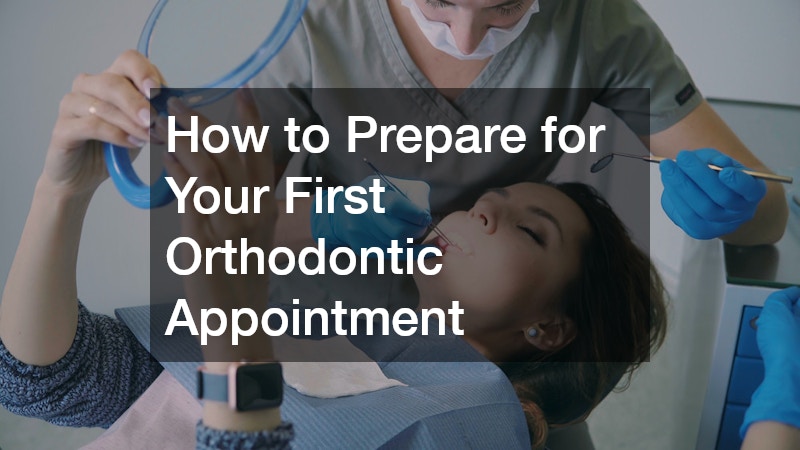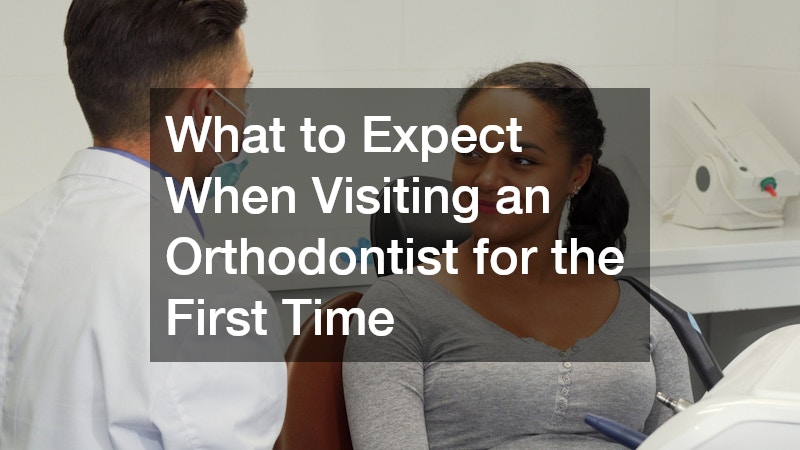Visiting an orthodontist for the first time can feel both exciting and a little overwhelming, especially if you’re unsure of what to expect. Whether you’ve been referred by your dentist or are seeking treatment on your own, understanding the process can make the experience much more comfortable. This article will guide you through each stage of your first visit, from the consultation process and preparation to costs and treatment timelines.
What Happens During the First Orthodontic Consultation?
Initial Evaluation Process
Your first visit to an orthodontist typically begins with a thorough review of your dental and medical history. The orthodontist will ask about previous dental treatments, oral habits, and any concerns you have about your teeth or bite.
This is also an opportunity for you to share your goals—whether you’re seeking aesthetic improvements, bite correction, or relief from discomfort caused by misaligned teeth. Establishing a complete background allows the orthodontist to tailor a treatment plan specific to your needs.
Diagnostic Tools and Examinations
To assess your oral condition, the orthodontist may take diagnostic records such as digital X-rays, photographs, or dental impressions. These tools help evaluate tooth positioning, jaw alignment, and bone structure. Some clinics now use 3D scanners to create digital models, making the process more comfortable and accurate. These detailed examinations enable the orthodontist to identify issues that might not be visible to the naked eye, such as impacted teeth or bite irregularities.
Treatment Recommendations
After reviewing your records, the orthodontist will explain the findings and outline potential treatment options. Depending on your needs, they might recommend braces, clear aligners, retainers, or other corrective devices. Each treatment plan is personalized—factoring in your age, dental condition, lifestyle, and goals. You’ll also receive an overview of expected treatment duration, costs, and maintenance requirements so you can make an informed decision.
How to Prepare for Your First Orthodontic Appointment
Gathering Essential Information
Preparation can make your first visit much smoother. Bring any recent dental X-rays, medical records, and a list of medications you’re currently taking. If your dentist referred you, having referral notes can provide valuable background for the orthodontist. Parents accompanying children should also share any relevant developmental or behavioral information that may affect treatment planning.
Setting Expectations
It’s important to approach your first appointment with realistic expectations. The orthodontist may not begin treatment immediately, as diagnostic evaluations and planning come first. Prepare a list of questions about treatment types, costs, and what daily life might look like with braces or aligners. This ensures you leave the office with a clear understanding of the next steps.
What Costs Are Associated with Orthodontic Treatment?
Consultation Costs
Initial consultation fees vary depending on the orthodontist and the complexity of your case. Some practices offer free consultations, while others charge a modest fee that may include X-rays and diagnostic imaging. Always confirm what’s covered when scheduling your appointment to avoid surprises.
Treatment Costs and Payment Options
The total cost of treatment depends on several factors, including the type of appliance used, treatment length, and the severity of the issue. Traditional braces and clear aligners typically range in price, but many orthodontists offer flexible payment plans or financing options to make treatment more affordable. Be sure to ask about monthly payment programs or discounts for upfront payment.
Insurance Coverage and Benefits
If you have dental insurance, check whether orthodontic treatment is included in your plan. Coverage often applies to patients under 18, but some plans also cover adult orthodontics. Your orthodontist’s office can help you verify benefits, submit claims, and estimate out-of-pocket costs. Maximizing your insurance coverage can significantly reduce overall expenses.
How Long Will the Orthodontic Treatment Take?
Factors Influencing Treatment Duration
The length of your orthodontic treatment depends on several variables, including age, oral health, and the complexity of your alignment issues. Younger patients often experience faster results due to ongoing jaw growth, while adults may require more time for full correction. Consistency in following your orthodontist’s instructions—such as wearing aligners as prescribed or keeping appointments—also influences treatment success.
Average Treatment Timelines
On average, orthodontic treatment can take anywhere from 12 to 36 months. Minor alignment corrections may be completed in less than a year, while complex cases require longer durations. During your consultation, the orthodontist will provide a more accurate estimate based on your specific needs and treatment plan.
Post-Treatment Retention
After active treatment ends, retention is a crucial phase. Your orthodontist will provide retainers to maintain the new alignment of your teeth and prevent them from shifting back. Regular follow-up visits ensure your results remain stable, and the orthodontist may adjust your retention plan over time to ensure long-term success.
Your first visit to an orthodontist marks the beginning of a journey toward a healthier, more confident smile. Remember that orthodontic care is a long-term investment in both function and aesthetics, improving your bite, oral health, and overall confidence. With the right orthodontist, clear communication, and consistent care, you’ll be well on your way to achieving lasting results and a beautiful smile.




